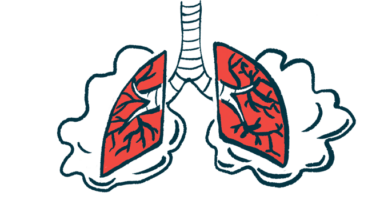Healthy at Home feasible, effective for mobile COPD care: Pilot study
Trends toward fewer hospitalizations, shorter hospital stays observed

A digital, community-based intervention to treat chronic obstructive pulmonary disease (COPD) exacerbations in a home setting significantly improved the quality of life of patients, a pilot study suggests.
The Healthy at Home intervention combined biometric monitoring via a smartwatch, symptom tracking, mobile on-demand acute care services, and optional digital pulmonary rehabilitation. The findings were published in BMC Digital Health in the study “Healthy at home for COPD: an integrated digital monitoring, treatment, and pulmonary rehabilitation intervention.”
The intervention was associated with trends toward fewer hospitalizations, readmissions within 30 days, emergency department visits, along with shorter hospital stays. These data have yet to be published on a peer-reviewed journal.
“Even in our relatively small study, the fact that we found statistically significant findings of clinically relevant improvement associated with use of this technology was really an ‘Aha!’ moment for us,” said Apurv Soni, MD, PhD, the study’s senior author and the co-director of the Program in Digital Medicine at the University of Massachusetts Chan Medical School, in a university news story.
“We did not anticipate that it would be this impactful,” said Soni, who’s also an assistant professor of medicine at Chan Medical School. “We just wanted to demonstrate proof of concept.”
Exacerbations, or sudden episodes of worsening symptoms, are a common complication of COPD, a chronic inflammatory lung disease. Every year, as many as half of COPD patients have at least one acute exacerbation, and 1 in 5 of those hospitalized for exacerbations are readmitted within 30 days.
As such, there are roughly 700,000 COPD-related hospitalizations annually in the U.S. and treatment costs are estimated at $50 billion, most of which cover acute care services. Therefore, “strategies are needed to decrease the incidence of severe COPD exacerbation to improve disease management, reduce costs, and support patient quality of life,” the researchers wrote.
Home-based treatment of COPD
Soni and his colleagues developed Healthy at Home to treat acute COPD exacerbations in an at-home setting whenever it was possible.
To assess its feasibility, the researchers conducted a pilot study (NCT06000696) involving 100 adults (55 women, 45 men) with COPD who were at risk of needing acute care within the next six months. The study was conducted in collaboration with Wellinks, a virtual healthcare company, and the CareEvolution health data platform.
The participants were asked to wear a smartwatch to collect data, including daily steps, heart rate, oxygen saturation, and sleep patterns, which were visible on MyDataHelps, an app hosted by CareEvolution. They had access to a physician-supervised team of paramedics who provided 24/7 in-home medical care and could treat COPD exacerbations with standard medications.
The care team also accessed participants’ study dashboards to review their biometric data and monitor any pattern changes. Those who were too ill to remain at home were diverted to emergency services.
The participants also could join Wellinks’ virtual-first COPD management app. Services include live coaching to support patient education and treatment adherence and a virtual pulmonary rehabilitation program that involves home-based exercise and breathing techniques.
To assess the intervention’s impact on quality of life, the participants completed several questionnaires. including those to assess quality of life and shortness of breath, at enrollment and three and six months via the MyDataHelps app. They were also asked to complete a monthly COPD self-assessment test and a weekly single-item wellness measure.
When triggered by smartwatch biometric data, participants could complete a set of self-reported questionnaires used in COPD management called CLEAR-Sx, Ex, and Rx.
Feasibility of Healthy at Home
Results showed that 96% of participants remained in the study for the six-month evaluation period. They wore smartwatches for a median of 114 days (nearly four months) and a median of 18.9 hours daily. For scheduled surveys, completion rates varied between 78% and 93%, with those at the start having the highest response rate.
Eighty-five participants completed a median 4.85 CLEAR-Sx surveys, which were activated by the participant, either triggered by biometric data or prompts programmed into the study app. Within 72 hours of the CLEAR-Sx survey, there were 53 visits to a healthcare facility related to COPD and three in-home treatments by paramedics. No emergency department visits were reported.
In an additional 67 instances, participants either self-referred themselves or had a clinician refer them for a parametric visit without a preceding CLEAR-Sx survey prompt. More than half (55%) opted to join pulmonary rehabilitation and coaching.
Across the quality of life assessments, scores on the COPD self-assessment test significantly improved between the study’s entry and its completion.
The study showed the feasibility of Healthy at Home, “with high participant retention and protocol adherence,” the researchers wrote, adding that “early signals suggest that the intervention improved patient quality of life and decreased COPD-related distress.”
“One of the big pushes in digital medicine research, but also in clinical research overall, is how can we integrate clinical trials with the practice of medicine,” Soni said. “If we line up everyone who is eligible for pulmonary rehab, it would take 100 years for them to get treatment. And so, the idea of doing this through technology and home-based rehab is something we’re very excited about.”







